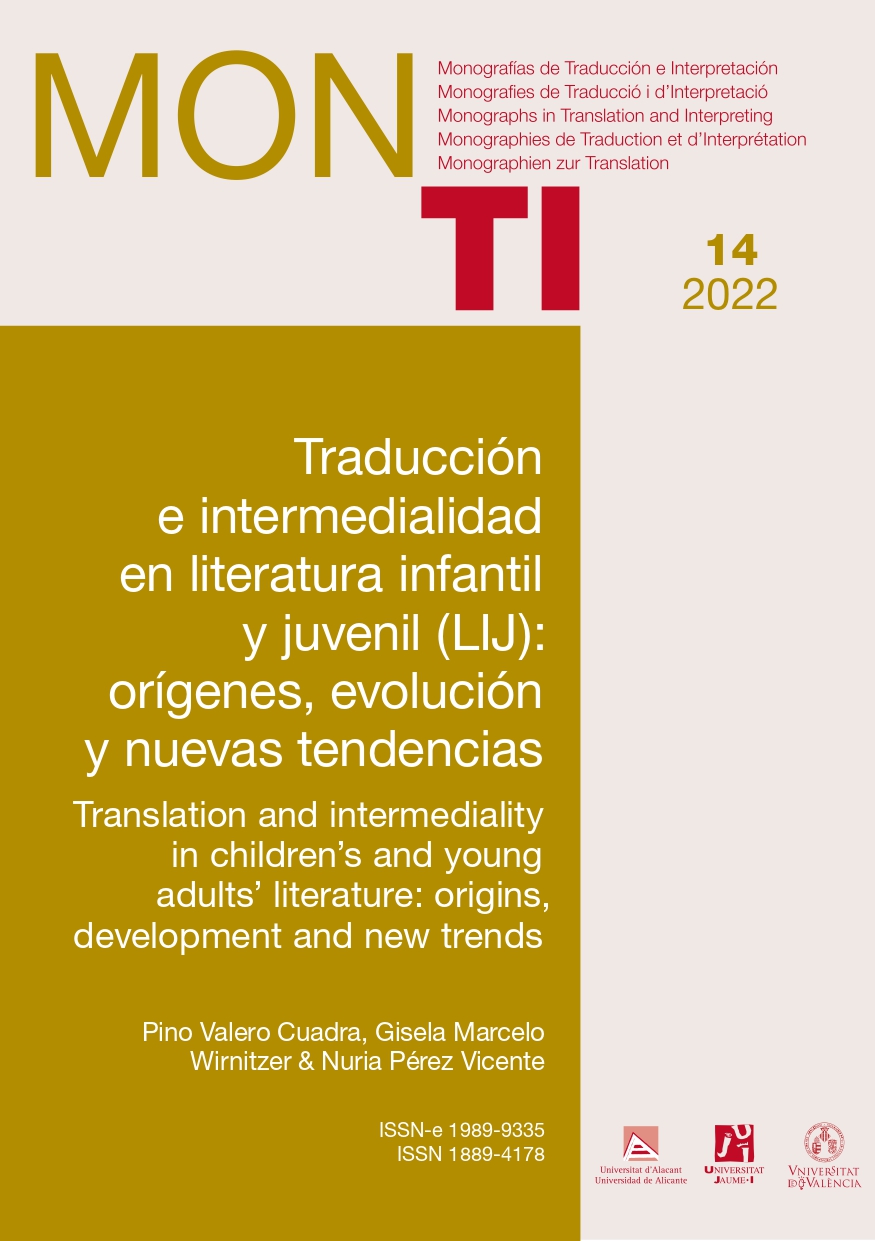La traducción amateur en lengua de signos catalana: ¿una alternativa para la adaptación de literatura infantil?
##plugins.themes.bootstrap3.article.main##
Resum
Este artículo analiza los resultados de un estudio de recepción con cuestionarios cuyo objetivo era comparar la aceptación por parte de los usuarios finales de las traducciones profesionales y no profesionales en lengua de signos catalana. Para ello, se pidió a cuatro voluntarios de diferentes perfiles (hablantes nativos y estudiantes de traducción) que grabasen en vídeo la traducción de dos cuentos infantiles. Después se diseñó un cuestionario en el que se mostraban dos vídeos (uno de una traducción profesional y otro de una amateur) y se pedía a los encuestados que puntuasen en una escala de Likert ocho categorías que definimos como criterios de calidad de la traducción. En total, 29 personas respondieron el cuestionario, cuyos resultados demostraron que las traducciones amateurs pueden llegar al nivel de las profesionales, siempre y cuando el traductor tenga un buen dominio de la lengua de llegada.
Descàrregues
##plugins.themes.bootstrap3.article.details##
La propietat intel·lectual dels articles pertany als autors i els drets d'edició i publicació, a la revista. Els articles publicats en la revista podran ser utilitzats lliurement per a propòsits educatius i científics, sempre que se'n faça una correcta citació. Qualsevol ús comercial és expressament penat per la llei.
Referències
BARBERÀ, Gemma. (2012) The meaning of space in Catalan Sign Language (LSC). Reference, specificity and structure in signed discourse. Barcelona: Universitat Pompeu Fabra. Tesis doctoral.
BOUDREAULT, Patrick & Rachel Mayberry. (2006) “Grammatical processing in American Sign Language: Age of first-language acquisition effects in relation to syntactic structure.” Language and cognitive processes 21:5, pp. 608-635.
CNLSE. (2017) Guía de buenas prácticas para la incorporación de la lengua de signos española en televisión. Madrid: Real Patronato sobre Discapacidad, Centro de Normalización Lingüística de La Lengua de Signos Española. Versión electrónica: <https://www.siis.net/documentos/ficha/529550.pdf>. Consulta: 19/11/2020.
DÍAZ-CINTAS, Jorge & Pablo Muñoz-Sánchez. (2006) “Fansubs: Audiovisual translation in an amateur environment.” Journal of Specialised Translation 6, pp. 37-52.
EBERHARD, David; Gary Simons & Charles Fenning (eds.) (2020) Ethnologue: Languages of the world. 32ª edición. Dallas: SIL International. Versión electrónica: <http://www.ethnologue.com>. Consulta: 15/09/2020.
FRIGOLA, Santiago. (2010) “La comunidad sorda de Catalunya”. En: Martí i Castell, Joan & Josep M. Mestres i Serra (eds.). Les Llengües de signes com a llengües minoritàries: perspectives lingüístiques, socials i polítiques. Barcelona: IEC, pp. 29-54.
GENERALITAT DE CATALUNYA. (2010) Llei 17/2010 de la llengua de signes catalana. Barcelona: Diari Oficial de la Generalitat de Catalunya. Versión electrónica: <https://portaljuridic.gencat.cat/ca/document-del-pjur/?documentId=541337>. Consulta: 10/01/2021.
HBB4ALL. (2017) Sign Language interpreting in HBBTV. HBB4ALL Accessibility guidelines. Cerdanyola del Vallés: Universitat Autònoma de Barcelona. Versión electrónica <https://pagines.uab.cat/hbb4all/sites/pagines.uab.cat.hbb4all/files/sign_language_interpreting_in_hbbtv.pdf>. Consul-ta: 19/11/2020.
INSTITUT D’ESTUDIS CATALANS. (2005) Gramàtica bàsica. Por-tal de la lengua de signes catalana. Barcelona: IEC. Versión electrónica: <https://blogs.iec.cat/lsc/>. Consulta: 10/01/2021.
LOU, Mimi. (1988) The history of language use in the education of the Deaf in the United States. Language learning and deafness. Cambridge: Cambridge University Press.
OFFICE OF COMMUNICATIONS. (2006) Ofcom’s code on television access services. Versión electrónica <https://www.ofcom.org.uk/__data/assets/pdf_file/0020/97040/Access-service-code-Jan-2017.pdf>. Consulta: 19/11/2020.
O’HAGAN, Minako. (2009) “Evolution of user-generated translation: Fansubs, translation hacking and crowdsourcing.” The Journal of Internationalization and Localization 1:1, pp. 94-121.
ORREGO-CARMONA, David. (2015) The reception of (non) professional subtitling. Tarragona: Universitat Rovira i Virgili. Tesis doctoral.
ROVIRA-ESTEVA, Sara & Irene Tor-Carroggio. (2018) Serveis d’accessibilitat sensorial a les televisions catalanes: situació actual, necessitats i propostes de futur. Informe final. Cerdanyola del Vallès: Barcelona. Versión electrónica: <https://ddd.uab.cat/record/189381>. Consulta: 16/09/2021.
SERRAT-MANÉN, Jordi. (2011) La percepció que tenen les per-sones sordes signants de l’actualitat periodística (2005-2009). Cerdanyola del Vallès: Universitat Autònoma de Barcelona. Tesis doctoral.


